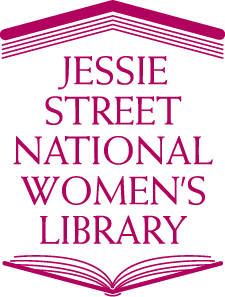Tapestry series no. 37
Contributed by Mary L Porter
Youngest of three children of William and Maria Parsons of Bristol, England. William, skilled artisan, was born to Hester and William Parsons, 1804 on a farm in the lonely hills of west Somerset and Maria, child of Catherine and Isaac Owen, a Welsh farmer, in winterbourne, Gloucestershire. William Parsons, free settler paid his family’s passage out of Bristol in the grimmest years England’s Industrial Depression, on a sailing ship. Which Clara said was the first from there carrying free settlers only. Clara had her 2nd birthday on board, arriving either 1841 or early 1842 settled in Watson Bay-Vaucluse area, the Parson children played with Captain Watson’s at the lighthouse. Clara was 19 when the ‘Dunbar’ was wrecked at The Gap and remembered life-long the terrible cries borne on the wind that night in 1858.
William, of gentle personality and literate, had often to find work away in the bush, sending his wages home by mail coach. He believed firmly in education for girls, perhaps encouraged by the Red Maids School in Bristol, so Clara was sent to boarding school at Mosman, where young ladies were instructed in embroidery, painting, French conversation and music with other lessons. She became an exceptional needlewoman, and very fine pianist.
William Parson was working with Dr. Kerr at Bathurst when the aboriginal brought the gold nugget to the Dr. and it was the gold from William’s claim which bought the farm at Ulmarra, Grafton. Clara’s only brother opened a store on the diggings. Henry P. became variously storekeeper, journalist, schoolmaster (the first one at Gosford) orchardist, proprietor of ‘Gosford times’ news and local land valuer in that area. They were a close and affectionate family, Henry, Selina and Clara, lifelong.
Clara had a buggy accident at Ulmarra. She lay in bed for some weeks wondering why the doctor went to the bottom of her bed each visit, until she was shocked to find he was tickling her toes. ‘Thank God’, he said, ‘I feared you’d never walk again!.’ She taught music until she was 37.
After a six month courtship she married the first school master at Brushgrove, Samuel Weston, son of Rev. Samuel Weston, dissenting minister of Cores End, Buckingham, England. They were married in the garden of the bride’s home, Ulmarra, 21st Dec. 1875 by Rev. John Leslie Smith BA. Clergyman of church of England at Grafton witnesses John Cooper and Alfred Lardner. The same minister would in time baptise their two children.
Samuel Weston, fully trained in pharmacy, partly trained in medicine under his older brother Dr. Thomas Weston of London, in those days before either were university courses, set up a pharmacy charging only for the actual ingredients used in a prescription, and gave freely of his medical skills in that isolated area so far from the only doctor at Grafton, reached by horseback or riverboat.
Clara felt fearful when he attended sickbeds late at night.
Teachers were trained in schools by the school master, John Macdonald was Samuel’s trainee teacher who later married Miss McLachlan, daughter of the superintendent of Duntroon and the two families and their descendants were close friends for one hundred years.
Clara taught needlework at school taking her little ones to the classroom, each baby in turn in a clothes basket under her desk.
On the 29th December 1882 Samuel drowned when the S.S New England was wrecked on the bar at Yamba when the drunken captain took the ship out against the Pilot’s advice.
The community expressed its appreciation of their school master by erecting a monument to him in the Ulmarra cemetery.
The Government offered the widow a position as sewing mistress in Grafton superior public school, where she moved with her children. When her mother died, her father came to live with them. They went to school by sulky but later the children rode ponies, Una on side saddle. Clara insisted Una study science, So she was the only girl in a boy’s class at the Grammar school. Una was to become one of our early women chemists, graduating from Sydney uni. After her marriage to Fred Bell, accountant. Her brother, Percy Leonard Weston gained a scholarship to Sydney university, where he graduated in Science and Engineering, gaining a university medal and the Peter Nicol Russel gold medal for post graduate work in Engineering.
After many refusals, the Dept. of Education granted Clara a move to Sydney a short time before retirement, but at a lower rating.
Clara Weston lived to her ninety-third year finding her pleasure in gardening, and was among her plants outdoors the day before she died. There is no doubt she willed herself to live to watch her grandchild grow, Mary, only child of Percy who had died before forty, his wife Ivy dying a few years after him.
When Mary was young Clara would sit beside her after she had gone to bed to recite the beautiful poetry of the psalms. To the end she read with a magnifying glass. She was interested in current issues.
She died quietly at her daughter’s home in Gleninnes NSW, one winter night.


